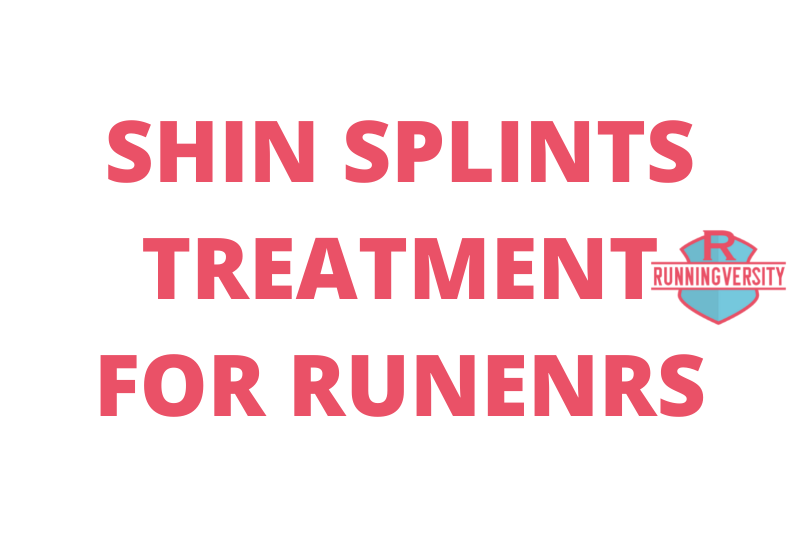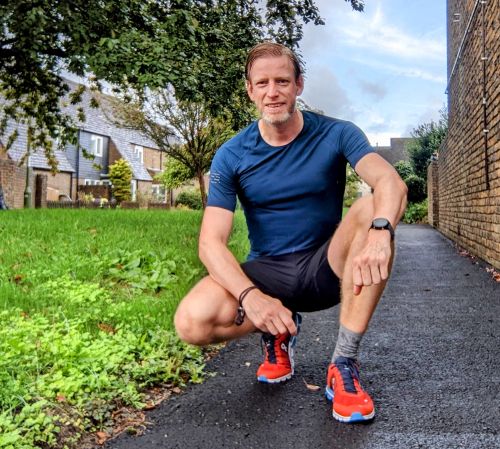Shin splints can be a nightmare for runners, and is especially common for beginners, or runners ramping up their training for a race. Shin splints manifest as a painful jarring or tenderness with each step in the front or sides of the lower leg. The good news is that in most cases shin splints are easy to treat and avoid.
This article is split into different parts. The first part is how to avoid shin splints when running. The second part is a guide on shin splints treatment for runners who are already suffering. We suggest you read and understand both though!
How to avoid Shin Splints when running
The main causes of shin splints when running, in order of importance are:
- Poor running form
- Lack of strength elsewhere
- Poor running plan – doing too much too soon
- Using inappropriate running shoes or lacing
Note that wrong shoes is last on the list of causes of shin splints!
To avoid shin splints, you need to have good running form (says the NHS). If you are interested in improving your running form (as all runners should be!), we have an in-depth guide on good running form (opens in new tab) available as an online course to go through at your own pace. I’ll summarise the main points here.
Shin splints predominantly occur when a runner lands with their leg stretched out in front of them, knee behind the heel. This puts a lot of pressure on the knee and shin and is not a soft motion. This normally happens when a runner does not understand how to engage their muscles properly to get the foot to land closer to them, and instead just waits for gravity to get the leg down to the floor.
To get the foot to land closer to you and underneath the knee, engage the glute (bum) muscles to pull the leg down faster with purpose. Since the leg is moving down faster, your stride length will be a bit shorter too. Then end result of this will be a higher cadence, i.e. the number of steps you take each minute, so be careful not to end up running faster – just move the legs up and down faster. If you find yourself out of breath, you have probably increased your speed without realising!
To help you understand this concept, take a look at some running drills (opens in new tab), which will force you to think about how engaging your muscles moves the legs up and down.
If you find the concept of engaging the glute muscles tricky, then alternatively you can focus on increasing your cadence and see if that forces you to work the glutes faster. I normally prefer to have higher cadence as the end result, but if you want to try from this end, run for 30 seconds (set a timer on your watch or phone) and count the number of times your left foot touches the floor. Multiply this number X4 to reach you “cadence” (number of steps per minute).
Now try to take shorter strides and quicker steps, pistoning the legs up and down quicker to see if you can make that number higher the next time. If you succeed in getting a higher cadence, see if you can feel what you are doing with your glutes on the way down (and hip flexors on the way up) that makes this work.
A quick note on changing your form: change is risky. Muscles trying a new mode of operation might take a while to adapt. Injury is a possibility. Normally I recommend change to running form be introduced super gradually, but if you are already suffering from shin splints, rather than just hoping to avoid them, you don’t have much to lose, so you may as well try changing quickly and see what the results are. If the shins splints are solved, but anything else starts hurting (calves for example), then you need to find a balance between gradual change and speedy results.
Strength issues causing tightness in the calves can cause shin splints
If hamstrings, glutes or quads are being a bit lazy due to lack of strength, the calves can become overworked and feel “tight”, even if the calves themselves are strong. This tightness can cause referred pain around to the front of the shin.
Doing too much running too soon can bring on shin splints. Beginner runners often suffer from shin splints, even if they have good running form because they suddenly leap into running without following a plan and try to run too far, too often. If you are following a beginner running plan but are still getting shin splints, look at your running form (and then shoes).
Similarly, more experienced runners might get shin splints if they suddenly decide to ramp up their normal training schedule, perhaps when training for race, or just in an effort to get fitter and faster. If their new running plan ramps up too fast without proper rest and recovery, they may find the increased load irritates the shins. Using running plans that are appropriate for your current level of ability is important.
How do shoes affect shin splints? If you have a shoe with a very high heel drop, it can tip you forward and put pressure on the shins. Most running shoes have a higher heel than forefoot, but that delta varies significantly between zero difference and about 13mm. If you have a shoe that’s at the top end, try one with a slightly lower drop, for example from 12mm to 8mm. It might not be a good plan to suddenly go from a high drop to a zero drop shoe though!
Also on the topic of shoes, make sure the shoe is the right size for you, so your toes aren’t scrunched up. Toe restriction will cause all sorts of issues all the way up the leg, including the possibility of shin splints.
Check you laces aren’t too tight across the top of the shoe. Your foot needs to be able to move naturally to absorb impact and lock the bones during toe-off.
Shin splints treatment for runners
Before considering shin splints treatment for runners, firstly check you haven’t got a stress fracture. If the pain is severe, i.e. you can’t walk without pain, see a doctor and get an X-ray. Thankfully stress fractures are frequent, but are serious. If in doubt, get checked out!
Shin splints are normally characterised by slight tears and inflammation of the fascia where they attach to the tibia, the bone on the front of your shin. Shin splints symptoms are pain down the shin, which might go away or lessen after exercise. Does this sound like you? Here is a guide on how to tackle approach shin splints treatment for runners.
- Reduce intensity of activity to recover from shin splints
- Avoid anti-inflammatory medicines unless too painful to function
- Add strength work
You should take a few weeks off running. This is probably not what you want to hear, but muscle tears won’t get a chance to heal if you keep stressing them, so if the pain is severe, there is no other option. There will be times in your running journey when you have to take time off, due to life, illness or injury. Have something else to fall back on. Go for walks if that is pain-free. Try cycling – it doesn’t jolt the leg in the same way. Take up Pilates. Try swimming – learn to front crawl with a pull-buoy between your legs so that you get cardio work, but don’t need to use the legs.
Anti-inflammatory medicines slow healing. Avoid them if you can. However, if pain is too much while walking around during a normal day for a job, then take them to function. Bear in mind that they will disguise pain, so don’t get lulled into a false sense of security that might make you think you can start running again when you aren’t yet ready! Most of your healing happens at night, so try to avoid them before bed. However, if shin splints pain is keeping you awake, then it would be best to take them and get quality sleep.
Strength work will build running muscles to support the legs and joints. Choose exercises that don’t irritate the shin splints. Eccentric heel drops, dead lifts and single leg squats would be a good place to start. Walking lunges and other dynamic movements might be too much.
If you only get shin splints on one leg, check if you have a mismatch between what your feet are doing. While running, feel the amount of pressure under the ball of the foot and big toe for each foot. Is there a difference? If the leg with shin pain has less engagement with the big toe and ball of the foot, this could be a factor – attempt to match them and see if it helps.
Is there anything else that has helped you with your shin splints treatment?

